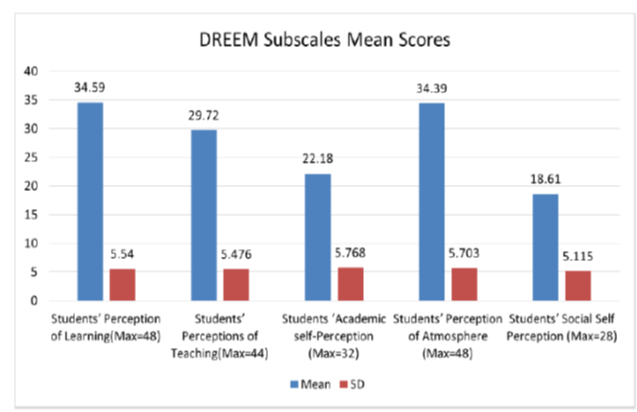


Indian Journal of Science and Technology
DOI: 10.17485/IJST/v13i38.1294
Year: 2020, Volume: 13, Issue: 38, Pages: 4003-4012
Original Article
Sarfraz Aslam1,2, Atif Saleem3,2, Ali Usman Hali1*, Huma Akram4
1School of Education, Shaanxi Normal University, Xi’an, 710062, China. Tel.: +86-155-0293-7367|
2Equal Authorship
3College of Teacher Education, Zhejiang Normal University, Jinhua, 321004, China
4School of Education, Northeast Normal University, Changchun, 130024, China
*Corresponding Author
Tel: +86-155-0293-7367
Email: [email protected]
Received Date:04 August 2020, Accepted Date:09 October 2020, Published Date:27 October 2020
Background/Objectives: Learning environment plays a crucial role in students’ academic achievements. To understand this relationship, the study explores the perceptions of international science students in degree programs. Methods/Statistical analysis: This study used a mixed-method research design. Five interviews were conducted to explore and confirm the quantitative findings. Dundee Ready Educational Environment Measure (DREEM) questionnaire was used to collect quantitative data from a sample size of 71 participants in three faculties, including life sciences, chemistry, and physics. Qualitative data were collected through semi-structured interviews. Cronbach’s alpha, Mean, standard deviation, ANOVA, and thematic analysis were conducted to analyze the data. Findings: The overall mean score of the DREEM was 142.49/200, indicating that international science students held positive perceptions of their learning environment. However, interviews explored the problematic areas, such as lack of a support system for students who got stressed, orientations about degree programs do not provide information for the next steps during the programs. Labs are well-equipped; however, all labels and instructions inside labs are in the Chinese language. Conclusion: There is a need for a student support system to enhance the learning environment. Well-planned orientation should be conducted at the start and mid of the programs to facilitate students’ learning environment.
Keywords: Science; perceptions; learning environment; student support system; international students
© 2020 Aslam et al.This is an open-access article distributed under the terms of the Creative Commons Attribution License, which permits unrestricted use, distribution, and reproduction in any medium, provided the original author and source are credited. Published By Indian Society for Education and Environment (iSee).
Subscribe now for latest articles and news.